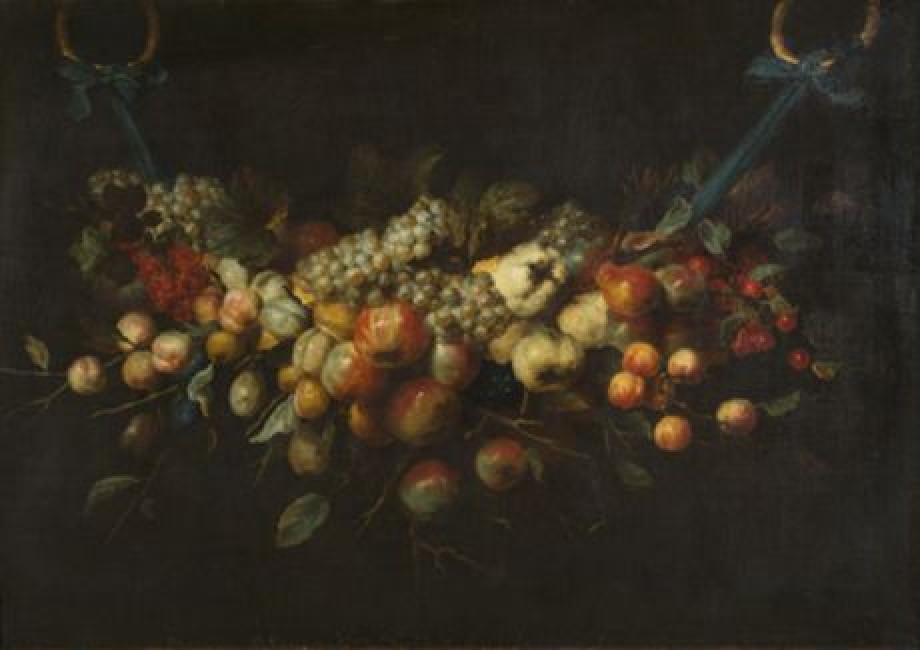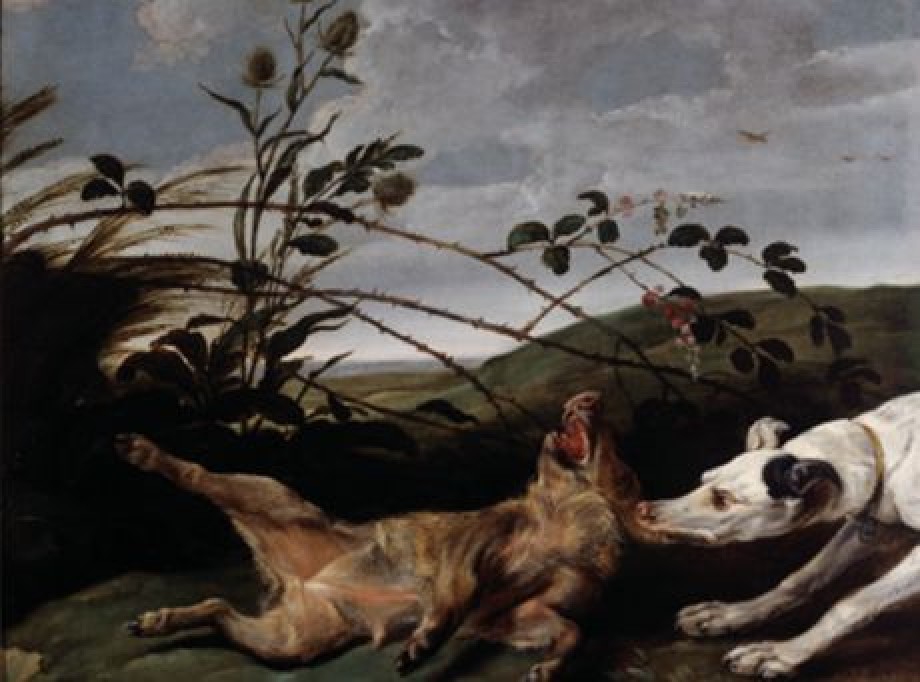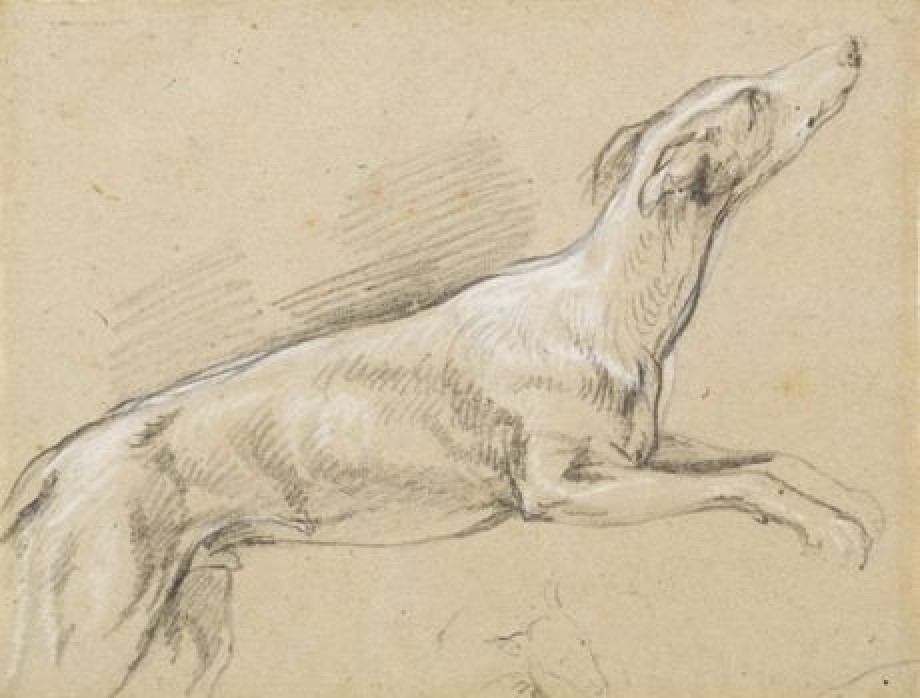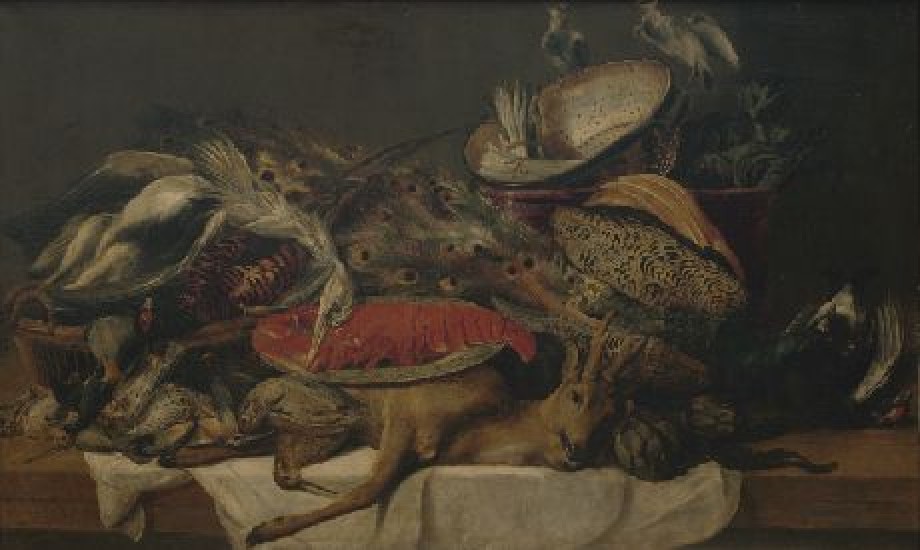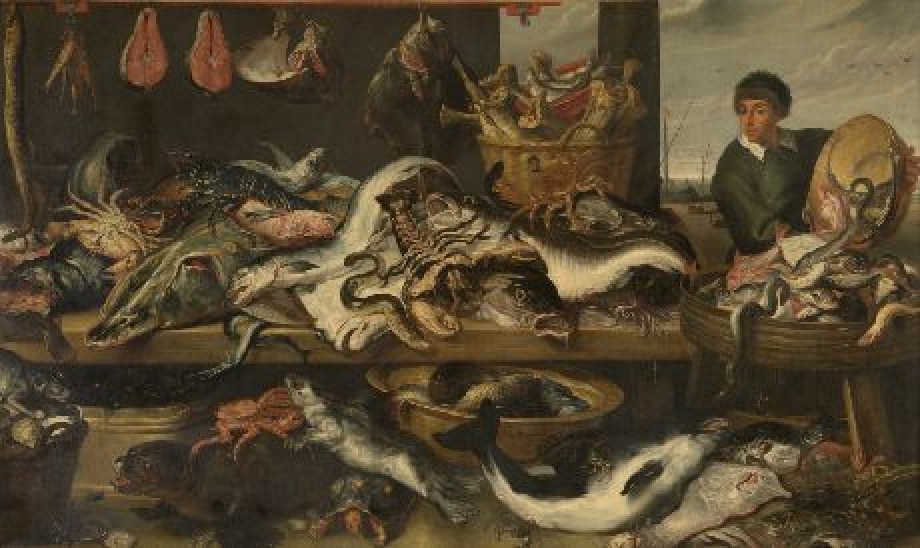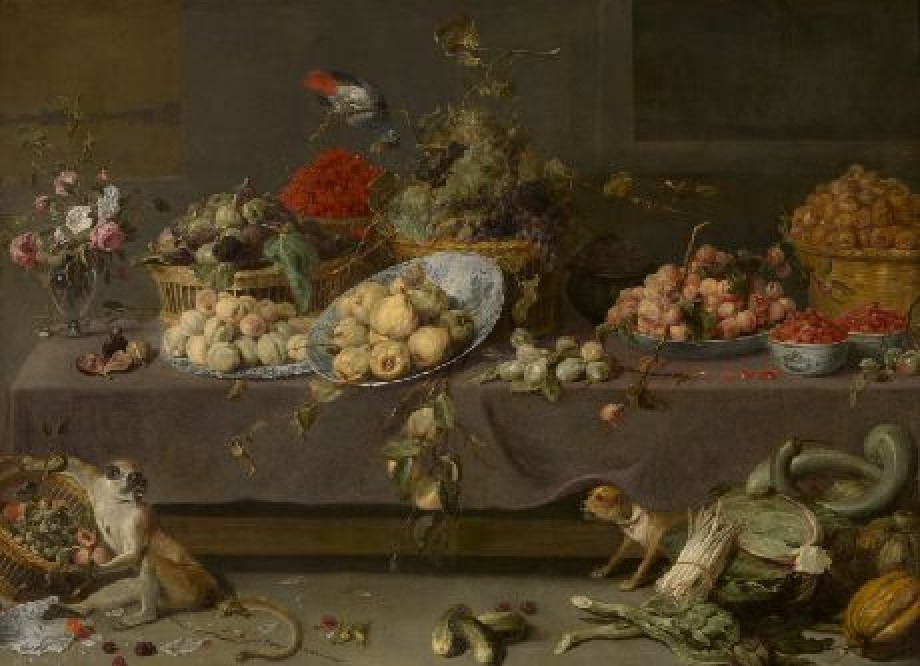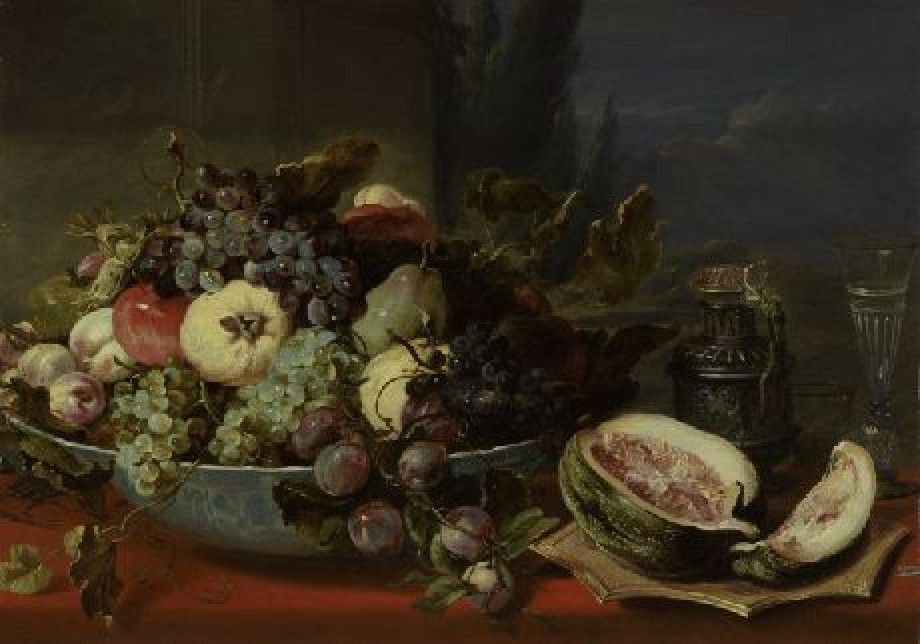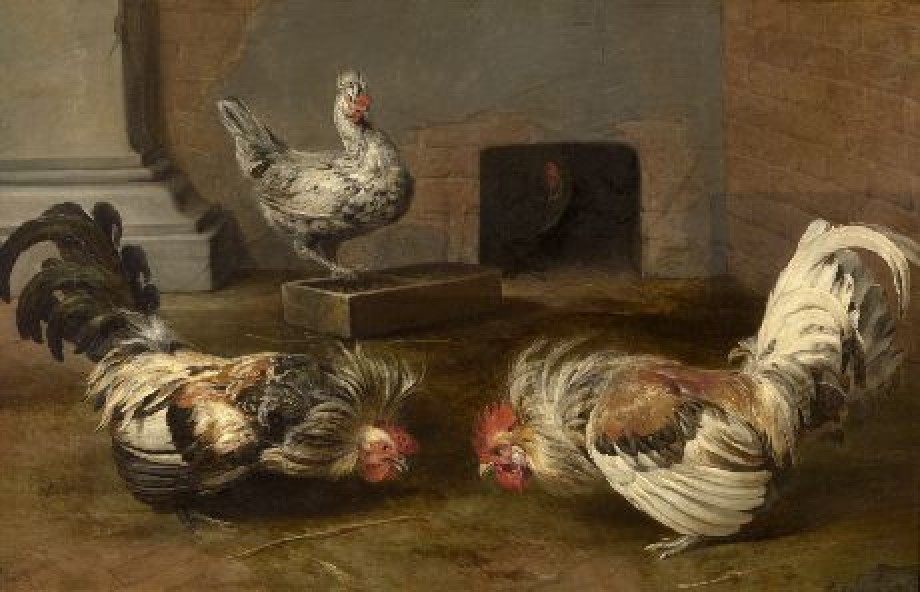
Frans Snijders
More about Frans Snijders
Frans Snijders is an Antwerp draftsman and painter. He is a student of Hendrik van Balen I (1573-1632) and Pieter Brueghel II (1564-1638) and the brother-in-law of the painters Paul (1595-1678) and Cornelis de Vos (1584-1651). Snijders is the instructor of Joannes Fijt (1611-1661). He possesses a famous painting collection. Snijders dies as an especially influential and wealthy artist.
Frans Snijders is the still-life specialist of the first half of the 17th Century. He is known for the great variety that he displays: all sorts of foods, utensils and services and the most divergent types of animals are depicted dead or living. Snijders often recycles motifs. His art is largely decorative by nature and his compositions are geometrically constructed.
The painter is successful and readily gains a good reputation. He is often requested for still lives and to paint in the animals in the works of other artists. He works with, amongst others, Abraham Janssens (1567-1632), Peter Paul Rubens (1577-1640), Cornelis de Vos (1584-1651) and Jacob Jordaens I (1593-1678).
From Rubens, Snijders learns how to heighten the dramatic in his still lives by a noteworthy method and by, for example, capturing a strikingly situated mute swan. After a period of time, his still lives become larger and take on monumental allure and the dramatic element is further intensified.
Snijders explores and innovates various still-life genres such as the market scene, the breakfast scene, the animal, hunting, fruit and fish still lives. He is the creator of the Baroque kitchen still life. For this he bases himself on the market and kitchen pieces of Pieter Aertsen (ca. 1508-1575) and Joachim Beuckelaer (ca. 1533-ca. 1575) from the 16th Century, but pushes the religious tableau aside. From the hunting still life, Snijders makes an independent animal piece without human presence, full of drama and dynamism. Later in his career, Snijders introduces landscapes into his still lives, which in various cases Jan Wildens (1585/86-1653) paints for him.
November 1579
Frans Snijders is born in Antwerp.
1593-1607
Snijders is active in Antwerp during these years. In 1593 he is a student of Pieter Brueghel II.
1602
Snijders becomes Free Master in the Saint Luke Guild in Antwerp.
1608
The painter is present in Rome.
1608-1609
The artist travels from Rome to Milan and is presented to Cardinal Federico Borromeo by Jan Brueghel I (1568-1625).
April 1609
Snijders leaves Milan.
1609-1657
Snijders is active in Antwerp.
Beginning circa 1610
Rubens asks Snijders to collaborate on Philopoemen recognised (Museo del Prado, Madrid). It is the first documented collaboration between the two artists. It may also be the first Baroque still life with figures.
23 October 1611
Margaretha de Vos (the sister of painters Cornelis and Paul de Vos) is married to Frans Snijders.
Circa 1615-1617
The Ghent Bishop Antonius Triest (1576-1657) orders the Four Markets (Hermitage, Saint Petersburg).
Circa 1621
Anthony van Dyck paints the portrait of Frans Snijders and his wife Margaretha de Vos (Frick Collection, New York).
1622
The wealthy artist purchases house number 8 in the Keizerstraat in Antwerp.
1628
Snijders is dean of the Antwerp Saint Luke Guild.
1636-1638
Along with other artists, Snijders works on the mythological decorations (after oil sketches by Rubens) of the hunting pavilion Torre de la Prada of Philips IV, in the vicinity of Madrid. Snijders paints 60 hunting paintings and animal pieces.
22 June 1639
Rubens and Snijders receive the commission for an additional number of 18 paintings to deliver for Philip IV of Spain.
1640
Peter Paul Rubens dies in Antwerp. Snijders is one of the appraisers who help with the assembly of the inventory of Rubens' collection.
1641 and 1642
Snijders travels in the company of other artists to the Northern Netherlands.
1646
Snijders is probably present in Breda where he performs some work.
19 August 1657
Frans Snijders dies in Antwerp.
Text: Matthias Depoorter

